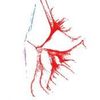29.9.2015 | 13:16
Stofnger ■orskfiska
Guni Magn˙s EirÝksson mun verja doktorsverkefni sitt um rannsˇkn ß stofnger nokkura ■orskfiska f÷studaginn 2. oktˇber.
Guni vann verkefni undir stjˇrn Einars ┴rnasonar prˇfessors, og var ßherslan ß a greina samsetningu ■orskstofnsins kringum ═sland. Notaar voru aferir sameindaerfafrŠi til a greina breytileika Ý genum og ß milli genasvŠum. G÷gnin voru sÝan greind me aferum stofnerfafrŠi, sem getur meti erfabreytileika Ý stofnum, s÷gu ■eirra, meti far ß milli svŠa og fleiri ■Štti.
HÚr a nean fylgir kynning ß efni ritgerarinnar ß ensku.
Doktorsvr÷nin fer fram kl. 14:00 Ý stofu 132 Ý Ískju, nßtt˙rufrŠih˙si Hßskˇla ═slands.
-----
In the present study genetic variation and population genetic structure in spawning Atlantic cod, Gadus morhua, around Iceland was examined. Earlier research on population genetic structure in cod has not been conclusive and the use of different molecular methods have shown different patterns. It is important to determine why different methods show different patterns in order to describe the population genetic structure in cod. In the present study both microsatellite DNA variation and mitochondrial DNA sequence variation were estimated. Both methods have commonly been used in population genetic studies in cod.
Findings of microsatellite DNA variation analysis showed a genetic difference between cod from the waters south and north of Iceland. However, analysis of the observed difference suggest that it can be explained by natural selection affecting genetic variation at a single microsatellite loci (Gmo34). When disregarding this locus from the analysis no genetic difference was observed. A small but significant genetic difference was found among Atlantic cod sampled at different depths off the south coast of Iceland, indicating that different populations of Atlantic cod may be found at different depths. Analysis of mtDNA sequence variation showed no overall genetic difference among different geographic areas around Iceland. Analysis of temporal mtDNA sequence variation showed rapid changes in allele frequencies, particularly in cod from NE-Iceland, suggesting that the mtDNA sequence variation can be useful for detecting recent population divergence. Thus, the findings of the present study do not suggest that cod around Iceland is geographically divided into distinct historical populations as has been suggested in some earlier studies. On the contrary the findings suggest high levels of gene flow in Atlantic cod around Iceland.
Genetic variation and population genetic structure across the North Atlantic ocean was also examined in saithe Pollachius virens, haddock Melanogrammus aeglefinus and whiting Merlangius merlangus using mtDNA sequence variation at the cytochrome c oxidase subunit I locus. The results showed limited trans-Atlantic genetic structure for all the species indicating high levels of gene flow or insufficient time for genetic differentiation to have become established. The observed genetic sequence variation for saithe and haddock suggest sex-biased migration pattern. The results indicate that females may be more philopatric and males more migratory. Such behaviour has rarely been described for marine fish and is worth further research.
The observed mitochondrial sequence variation for all the studied species indicate sudden population expansion, reflected in high number of singletons and a shallow genealogy. However, the estimated timing of expansion varies among the examined species, suggesting that the biological, historical or analytical factors resulting in the observed pattern may differ among the species.
Flokkur: VÝsindi og frŠi | Facebook
Nřjustu fŠrslur
- Eru virkilega til hŠttuleg afbrigi veirunnar sem veldur COVI...
- Grunnrannsˇknir eina aferin til a skapa nřja ■ekkingu og e...
- LÝfvÝsindasetur skorar ß stjˇrnv÷ld a efla hlut Rannsˇknasjˇ...
- Eru bleikjuafbrigi Ý Ůingvallavatni a ■rˇast Ý nřjar tegundir?
- Hr÷ ■rˇun vi rŠtur himnarÝkis
- Leyndardˇmur Rauahafsins
- Loftslagsbreytingar og leitogar: Ferasaga frß Suurskautsla...
- Genatjßning Ý snemm■roskun og erfabreytileiki bleikjuafbrig...
- Fj÷ldi og dreifing dÝlaskarfa ß ═slandi
- Staa ■ekkingar ß fiskeldi Ý sjˇ





BŠta vi athugasemd [Innskrßning]
Ekki er lengur hŠgt a skrifa athugasemdir vi fŠrsluna, ■ar sem tÝmam÷rk ß athugasemdir eru liin.